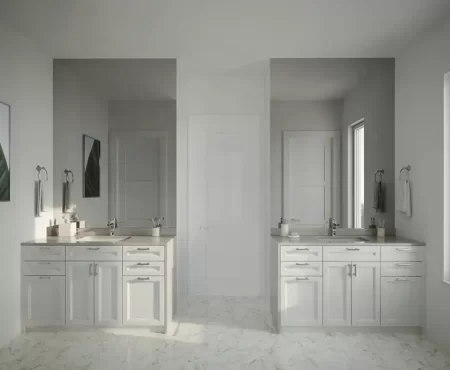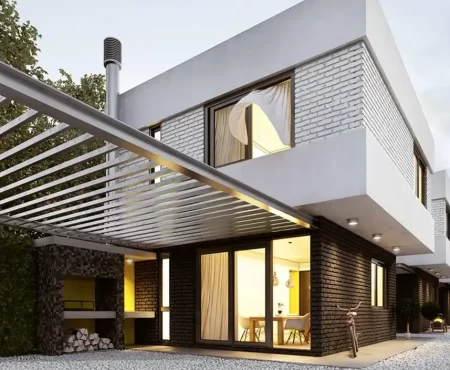How Regenerative Gardening is Reshaping the Backyard
Redesigning your backyard can be one of the most positive changes that you can make to your home, as you completely transform your outdoor space, whether that be through adding outdoor furniture or growing more flowers. While the interior of your home is what you’ll spend the most time in, your garden is what will be seen by most people, including your neighbors and friends who come to visit. It’s their first introduction to your home and will give them the first impression before entering.
Regenerative gardening has been a revelation for homeowners, as it is reshaping backyards by replacing traditional lawns with diverse ecosystems that restore soil health and support local wildlife. This approach uses techniques like no-till gardening to create a self-sustaining and productive garden space that requires less water and fewer chemicals.
This guide will explore how regenerative gardening has proven to be an effective solution for boosting the appearance of your outdoor space in a sustainable way. Continue reading to find out more.
Regenerative Gardening Techniques
Natural Soil Health
Achieving natural soil health in your garden is about working with nature to create a space that fosters optimal plant growth. The best way to start is by adopting no-till or no-dig methods, which means avoiding anything that can disrupt underground microbial life. Focus on feeding the soil with organic compost and mulch annually. This protects the soil from erosion, retains moisture, and allows your soil to become nutrient-rich over time.
While minimising disturbance is key, if you are establishing a new garden bed in particularly compacted ground, a high-quality machine like a Stihl Tiller can be an excellent tool for initially breaking up the earth, allowing you to incorporate organic material and establish your no-till system for years of healthy soil.
Embrace Biodiversity
Regenerative gardens move away from monoculture to promote a wide array of plant and insect life. This helps to create a healthy ecosystem for them to thrive, giving your garden extra life. You can maximise plant diversity by incorporating native species, which are already adapted to your local climate and require less care. Consider planting in layers using ground cover, shrubs, and small trees to mimic natural forests and create varied habitats.
This will attract beneficial insects like pollinators, which work together to create a naturally pest-resistant and self-sustaining backyard that will look beautiful for years to come.
Water Conservation
One of the greatest benefits of a regenerative approach is significantly reduced water usage. Healthy soil acts like a sponge, as it improves its ability to absorb and hold rainwater. To further conserve water in your backyard, you can:
- Rain Barrels: Capture rainwater from your roof to use for irrigation to reduce reliance on municipal water.
- Drip Irrigation: Deliver water directly to the plant roots, minimizing loss from evaporation compared to overhead sprinklers.
- Drought-Tolerant Plants: Choose native species that naturally thrive with less moisture.
Closed-Loop System
Having a closed-loop system in your garden eliminates the need to buy external fertilizers, reducing cost and waste. The primary technique for achieving this is composting. Using kitchen scraps, yard trimmings, and leaves as compost can help you convert waste into something that will build your soil health. This ensures that organic matter and nutrients remain on-site, continually enhancing the health and appearance of your garden without the use of any chemicals.
Composting is an essential part of any garden, as without it, your plants might suffer and not experience their full growth potential. You should regularly update your compost for the most effective results.
Maximize Plant Diversity
Maximizing plant diversity can be great for your garden. A highly effective technique is to plant edibles and ornamentals together, as this will allow the growth of vibrant herbs and vegetables alongside flowers. This companion planting turns a functional garden into a nice landscape feature with an interesting mix of textures and heights.
For a year-round garden, choose plants with varied foliage colors, staggered blooming times, and compelling structures to keep the space active even outside the summer months. Verticality is also effective, as it maximizes your usable planting space and transforms a flat backyard into a dynamic outdoor area.
Crop Rotation
Including a productive vegetable or food garden as part of your backyard redesign, crop rotation is essential for long-term soil health. This is the practice of planting different types of crops in the same area each season to keep a fresh rotation of crops growing.
For example, following a heavy feeder like tomatoes with a nitrogen fixer like beans or peas prevents the depletion of specific nutrients. This reduces the buildup of pests and diseases while ensuring your small productive area remains healthy all year round.
Final Thoughts
Your garden redesign should be entirely your decision, but employing regenerative garden techniques is recommended to give you a blooming garden that will last longer and look wonderful all year round. Mulching, biodiversity, and more will help make the process of growing your outdoor space much more enjoyable, while also keeping everything healthy.








